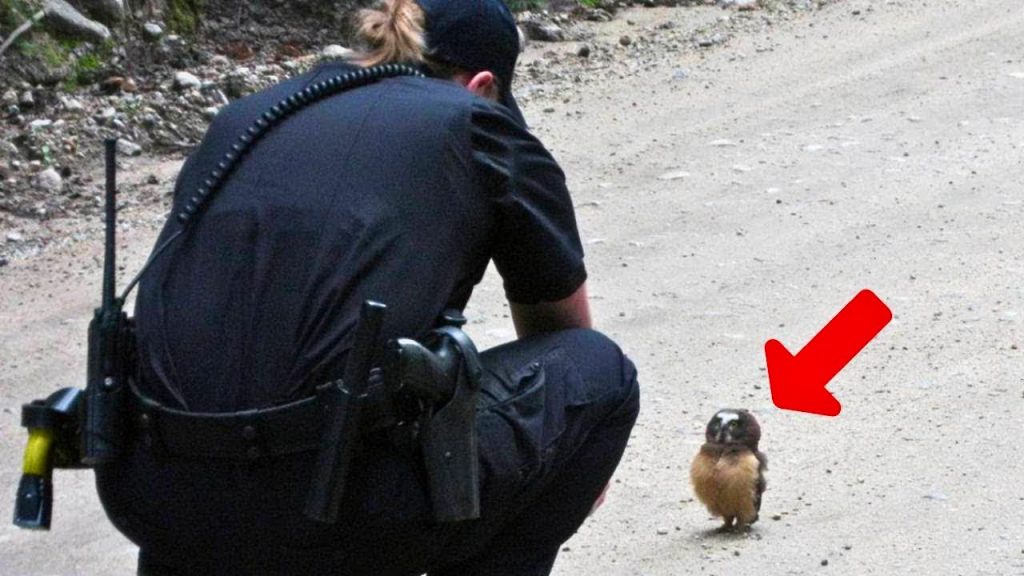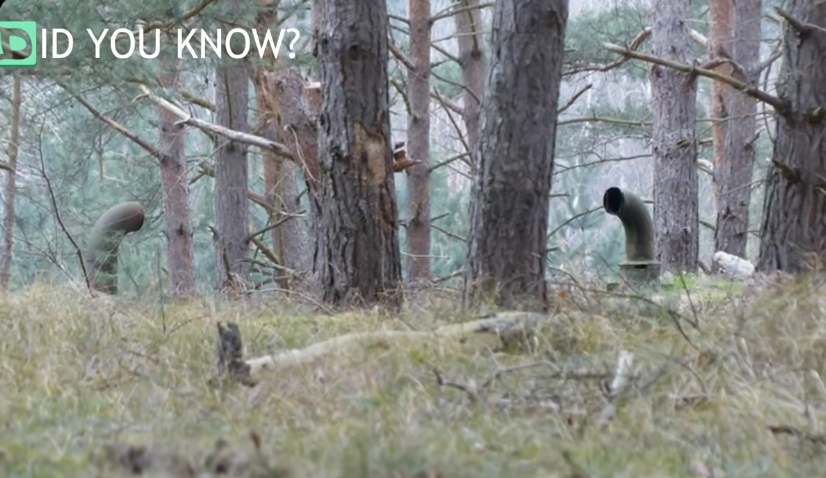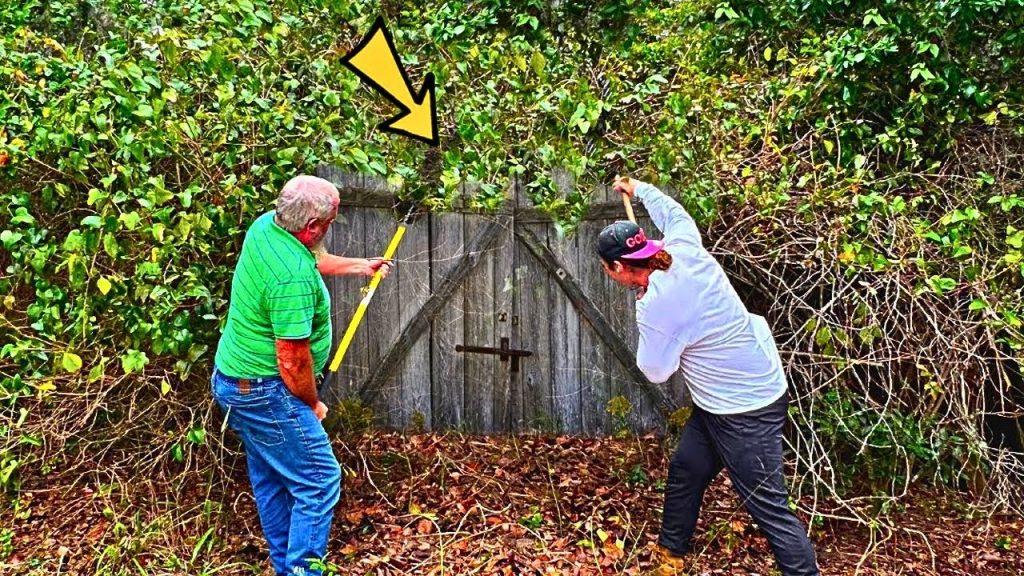He Spent 5 Years Of His Life Trying To Film THIS. Watch What He Caught Coming Out Of The Hole!
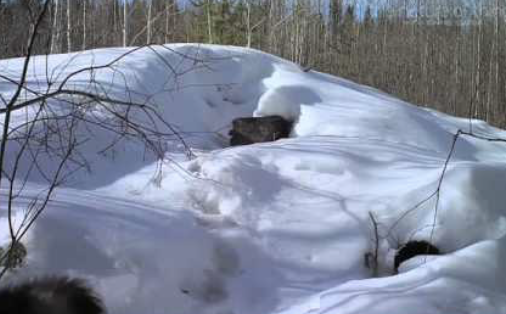
image via – facebook.com
What looks like some type of cross between a bear, a dog, a skunk, a raccoon, and a weasel? Here’s one hint, it’s an animal that only a few lucky souls have ever managed to see out in the wild. Here is another hint, it’s also the name of a fictional character in the X-Men comic series. Give up yet? The answer is a wolverine!
Wolverines are one of the hardest to find and photograph animals on Earth. They live in some of the most inhospitable places, and in the most remote regions, all across the northernmost portions of our planet. The scrappy animals look more like bears than their fellow weasel family members thanks to their short stocky build, heavy fur coat, and huge paws with razor sharp claws.
Wolverines are hard to track down and locate in part because they’re extremely solitary animals who like to roam. Since they occupy territories that can be anywhere from 50 to over 350 square miles, that’s a huge area of territory to hide and search through.
In addition, they’re also nocturnal and are most active at night when they go out hunting and it’s super cold and dark outside. Adding to their rarity is the fact that they are built for their habitat and can move with precision speed across snowy, mountainous terrain.
Anyone even attempting to keep up with one wouldn’t stand a chance, no matter how much specialized gear or in shape they may be. Wolverines have earned their reputation for being ghost-like and ultra evasive. They’re virtually impossible to observe unless one is trapped, which is what makes this footage so rare and unique.
It was captured by Andrew Manske, a wildlife filmmaker who has spent his life’s work recording amazing footage of some of the world’s hardest to find animals. It took him five long years to finally catch a wild wolverine and her kits on film, a moment which he describes as “the highlight of my career as a wildlife filmmaker.” Check out the clip here and see how a wild wolverine acts and moves through the snow.
Manske filmed the female and her babies when he was working on a documentary for Canada’s CBC called Wolverine: Ghost of the Northern Forest. He even managed to capture the family active in broad daylight, which is highly unusual.
He attributed that fact to the likely possibility that a nearby predator was lurking somewhere in the area, and so the mother moved dens to keep her babies safe and sound to the best of her abilities.
Whatever her reasons may have been, it’s certainly a beautiful sight to see a devoted mother taking care of her young babies in the wild, where they belong as mother nature intended.
Please Share This Story With Family and Friends
It Took Them Over 5 Hours To Try To Save THIS Whale From A Net But Then The Whale Does The UNTHINKABLE!
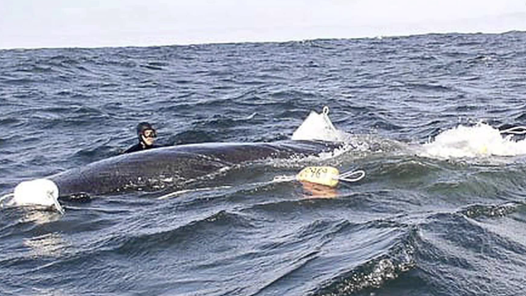
image via – youtube.com
When somethings wrong and a Humpback whale needs rescuing, who do you call? For crab fisherman working in the waters off of the coast of San Francisco, California, the answer was the Marine Mammal Center. As soon as they received the call a team of volunteers and divers was immediately assembled and they quickly set out to find the stricken whale. Time was of the essence and they knew they had to locate the poor whale before he disappeared and was lost to the vast ocean forever.
When they finally found the massive mammal they assessed the situation and noticed that it had become trapped in a messy tangle of ropes. There were many different lines that had become wrapped all around its body and they had started to dig deep into the skin.
The painful lacerations were slowly weakening and sapping the whale of its strength, and making it vulnerable to predators. Without help and human intervention, the whale would never untangle itself and would surely die a slow and painful death.
Working among the team that day back in December was an experienced diver and animal activist named James Moskito. He had done high risk rescues for over 25 years, some with the military, and was the first to enter the water. Moskito began the long arduous process of cutting the whale free from the ropes and described the mess tangled around it as being equal to a 3,000 pound anchor.
He explained that “Some of the individual ropes went into the blubber two or three inches deep. I put my hand on the whale and I told the whale, ‘OK. This is gonna hurt.’ The whale was so cooperative, it would open its mouth and a guy would put his hand up inside of it and pull pieces of rope out of the baleen one by one.”
All the while the whale remained near the surface and never acted aggressive towards any of the divers. He simply floated calmly over the course of the five hours that it took before he was finally freed of his chains.
Once the Humpback was clear to go, an extraordinary and wholly unexpected thing happened. Instead of leaving the divers, it dove down below them and then back up to the surface, right to where James was. The gentle giant then slowly swam in circles and approached his rescuers, rubbing up against each one of them in turn to express its gratitude and thanks for the help.
Moskito said that “It seemed kind of affectionate, like a dog that’s happy to see you. I never felt threatened. It was an amazing, unbelievable experience.” It’s something you have to see to believe and truly appreciate, so check out the video of the incredible rescue and relive the experience!
Please Share This Story With Family and Friends 🙂
Two Men Try To Save Drowning Baby Zebra But That’s When The Zebra Mom Confronts Them and Does The Unthinkable!
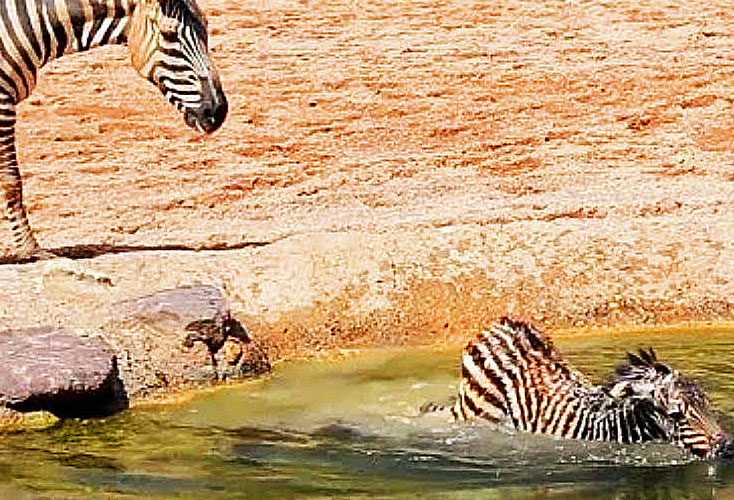
image via – youtube.com
Many people are torn when it comes to zoos and animal parks. On the one hand a lot believe that these animals shouldn’t be placed in small artifical enclosures and think they deserve to be in the wild where they are meant to be. On the other hand, many animals at zoos and wildlife centers are rescued from poachers, sketchy circuses or were accidentally wounded and wouldn’t survive unless they were rescued. Also, wildlife centers and zoos give us such an in depth view and understanding of these magnificent creatures, which gives us an opportunity to understand and help their fellow animals who are trying to coexist in a world filled with humans.
Regardless of where you stand on zoos, the animals themselves should be cherished and treated with decency, love and respect. Sometimes we are treated to the very rare sight of seeing these amazing animals give birth and help keep the numbers of their species above the endangered list. The first and probably most famous zoo animal birth that almost everybody on the entire planet remembers is good old April the Giraffe. People waited and waited for months as they watched the pregnant giraffe in awe waiting for that exact moment she would give birth. Instead of watching their usual tv shows, movies or video games, people were glued to April’s live stream waiting for that baby to come.
When the day finally came it was pretty much like Christmas to many people as the world rejoiced, a new miracle baby giraffe was in the world and all the time, interest and love people put into pregnant giraffe April and her soon-to-be baby all paid off in the end. Although baby animals aren’t born everyday in zoos and no birth really matched the curiousity and worldwide attention as April it still does happen and it is just as exciting when it does!
This brings us to today’s amazing story which features a Zoo in Valencia, Spain called Biopark which is one of the biggest and most popular zoos in the region. The zoo contains over a whopping 4,000 animals and specializes in African wildlife and fauna. However, the zoo is most well known for its intricate and incredibly designed habitats. They use a technique called zoo immersion where people are literally immersed into the habitats with the wildlife without actually disturbing the incredible creatures. Instead of the usual ugly and potentially inhumane cages, they use mostly natural barriers like rivers, lakes, ponds and streams to seperate tourists from the animals.
At first when people get to Biopark they sometimes feel a bit uneasy because it feels like these wild animals could easily jump out of these immersive habitats, since mostly everyone is used to the classic cage design. However, these immersive designs have proven time and time again to be just as safe or even safer then a standard zoo cage habitat. This brings us to the main part of today’s story, which is somewhat of a zebra love story/fairy tale. La Nina a mare and a colt name Zambe were introduced into the immersive and well designed zebra habitat. The two immediately became fond of one another spending most of their days and nights together and soon enough, as it usually happens in nature La Nina was impregnanted.
This beautiful zebra couple were going to have a beautiful baby zebra and start a family! After 13 long months of pregnancy mama was finally ready to give birth. Employees of the zoo knew the day was coming as they all watched to make sure everything went smooth without any complications. Soon guests at the zoo had heard the whispers that the zebra birth was about to happen and they too flocked to watch this mama give birth to her baby. The birth was a quickie, almost as soon as the baby popped it’s little head out the rest of it’s body followed suit. Everything seemed to be running on schedule, no complications and the beauty and miracle of new life was on display for all to see.
When zebras are born in the wild, they immediately get their land legs usually within the first 10-15 minutes after they are born due to the threat of predators. So just as they do in the wild this baby also found his legs and was up and trotting around exploring the habitat within 10-20 minutes. This baby zebra was a bit overzealous and let curiousity get the best of him as he trotted extremely close to the water in the habitat. The clumsy young baby stumbled and fell head first into the watering hole.
At first the people watching didn’t think much of it and you could even hear laughter as people really didn’t understand how dangerous a situation this actually was. Her zebra mom attempted to stop the baby before it tumbled into the water but because she was so exhausted from being pregnant and giving birth she couldn’t hold the baby back from the water. While visitors had a good chuckle, the zoo staff immediately knew this was a bad situation that could go from an amazing moment to a devastating tragedy ending with the baby drowning!
The zoo staff dove into the water and began swamming towards the baby who was taking on water and if intervention didn’t happen soon this baby would soon drown. Luckily the staff got to the baby in time, however the mama zebra’s mom instincts kicked into full gear even though she was completely exhausted. When she saw these predators (aka zoo staff) approaching and picking up her baby she immediately went into ferocious fight mode. She wasn’t going to let any predators let alone humans touch her baby without a very serious fight……
Watch the video below to see the full story:
Please SHARE This With Family and Friends
A Shark Swims Up To A Diver At An Aquarium And Surprises Him. Then Things Get Strange!
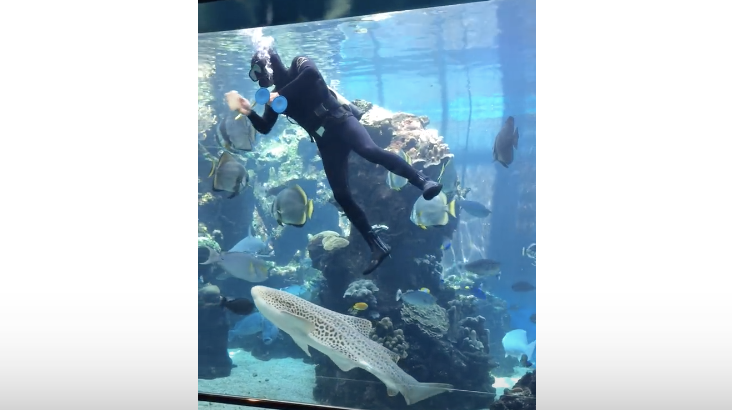
A lot of people have a fear of sharks. Maybe it’s because of the movie Jaws or maybe it’s because they have read stories of people getting their limbs torn off by the vicious and hungry apex predators. Whether you are scared of sharks or not, being stuck in a shark tank seems like something most people would try to stay away from.
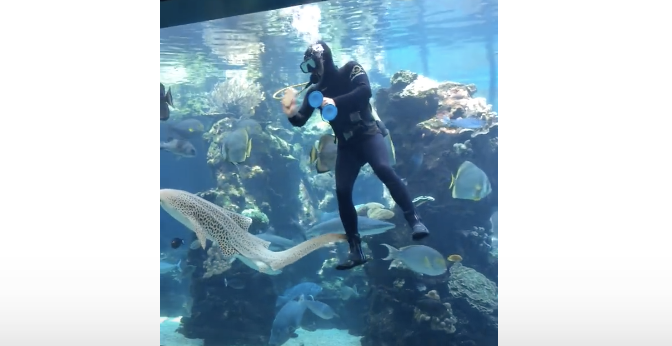
But what happens if you work at an aquarium and your job is to clean the shark tank? In that case the number 1 rule is to just stay calm and avoid panicking at all costs. In the following video a shark approaches the tank cleaner but then something happens that no on expected!
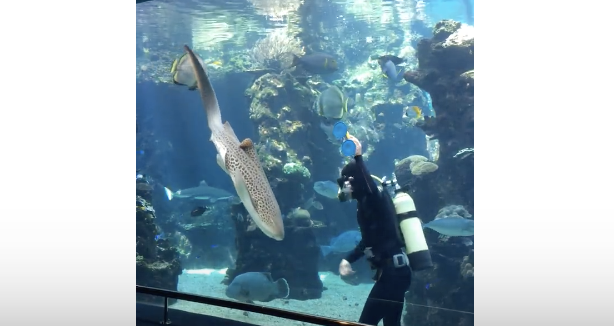
The shark begins to act like a puppy and all he wants from the cleaner is a nice belly rub and some love. Somehow, the tank cleaner knew exactly what to do and the shark seemed to enjoy it immensely. Maybe sharks will be man’s new best friend instead of good ol’ puppers! This is so wild. Enjoy The Video Below.
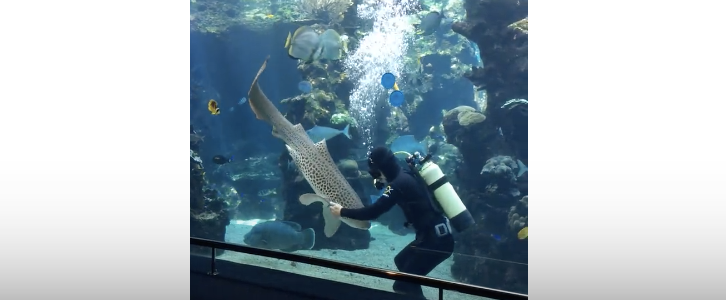
Please SHARE With Family and Friends
Does Your Cat Do The Head Bump All The Time? THIS Is The Strange and Surprising Reason Why.
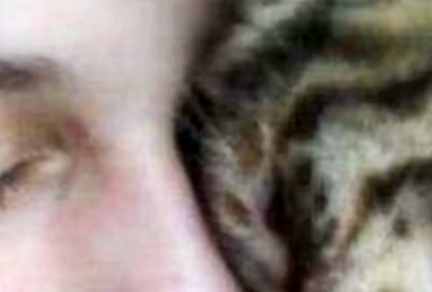
image via – youtube.com
Cats have held important roles all throughout history and practically everyone knows how the ancient Egyptians worshiped them as sacred. Fewer people are aware of the fact that up until several hundred years ago there were no cats at all in North America.
It wasn’t until they were brought over from Europe to help manage with pest control that they were first introduced to this side of the Atlantic. In that short span of time felines have managed to win over our hearts and in the process, our homes.
Today they are the number one most popular pet animal with an estimated 88 million of them in the US alone. A 2014 Carroll University study found that 11.5% of people identify themselves as cat people yet 30.4% of US households own a cat.
The study found all sorts of interesting things about cat owners, they’re 11% more likely to be introverted and 17% more likely to have a graduate degree, but it failed to shed light on more pressing cat issues….like why they do the things they do!
If you’ve ever wondered why your cat does certain things, here are the top most common cat behaviors decoded and explained in human terminology. The accompanying video goes over them as well in greater detail, be sure to check it out so that when your cat displays them, you’ll know what kitty is saying or conveying:
Headbutting- Your cat is saying hello and likes you! When they bump their head against you it’s also called ‘bunting’ which is a friendly gesture and a common manner in which cats greet people. They do it when they feel safe and as a way to rub their scent glands on you, which is a compliment so be thankful. Don’t get too excited though because they also love to do it to the couch! 🙂
Randomly sprinting to and fro- Your cat is trying to get in some exercise. Unlike dogs who get to go on long walks, domestic cats lack that luxury and basically have to walk themselves. They do that by bursting into a sudden ball of energy and running full speed across the house. Like most of the things cats do, they do it seemingly randomly whenever and wherever they want, but mostly when they’re feeling restless.
Spreading their legs- Your cat trusts you. An open legged position means that a cat is comfortable enough around you to fully submit and recognize that you’re in charge. Splaying their legs is a felines way of showing you vulnerability in the most vulnerable way they possibly can.
Sticking their behind in your face- Your cat wants to get to know you. When they back their rears up to your face it may seem offensive to you, butt it’s anything butt that! It’s actually kitty saying ‘hey what’s up’ to you because cats communicate mainly via scent and it turns out that butt sniffing is their main way of greeting one another.
Shake their booty before pouncing- Your cat is balancing itself. The booty quaking is adorable, funny, and a major part of why we love cats so much, but it’s actually part of a larger movement they’re doing to help balance themselves. To find equal footing a cat wiggles and part of that motion involves the entire leg and foot, which is what we end up seeing.
Kneading you like dough- Your cat is thinking back to their baby kitten days when they fed from their mother. This instinct is very strong in cats and while it’s original purpose, to get more milk from their mother’s breast, is no longer warranted, they do it anyways. Often it’s a sign of comfort and relaxation and
Laying on your stuff- Your cat wants attention. When you stare at your laptop all day long, your cat notices and when they want your attention they will sit right on it, front and center. Kitty’s don’t always need their human’s attention but when they feel the urge they always get what they want. It’s a simple as that.
Ignoring food in front of them, then eating random stuff- Your cat isn’t hungry or can’t see the food. Cats are grazers and will eat whenever they’re hungry. If you give them food at a time when they are not yet hungry, they won’t eat it. Also, they can’t see anything directly in front of their face because they’re near sighted. Anything within a foot is out of focus.
Burying their poops- Your cat is protecting itself. In an evolutionary, instinctual sense, a cat burying its number two is done to avoid other predators from getting a whiff of it and becoming alerted to their presence. In multi-cat households, they also cover it up to avoid offending other more dominant cats. However, when they fail to bury their doo-doo it can mean they’re possibly angry at you or offended by something you did.
Sleeping a lot- Your cat is normal. On average cats live 12-15 years and spend 70% of their lives asleep. Kittens need more sleep than adult cats because that’s how they get big and strong, when they’re asleep their bodies release growth hormones.
Please Share This With Family and Friends 🙂


